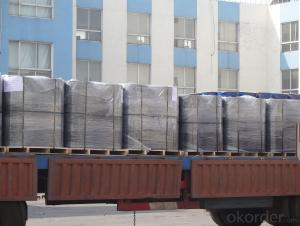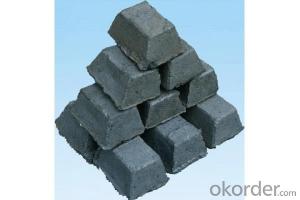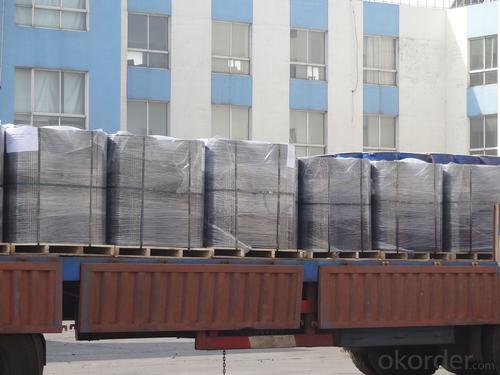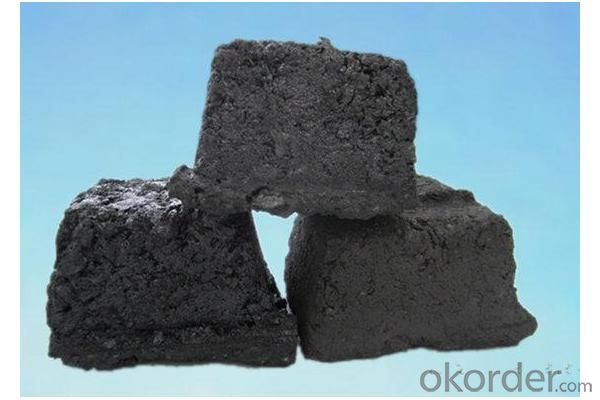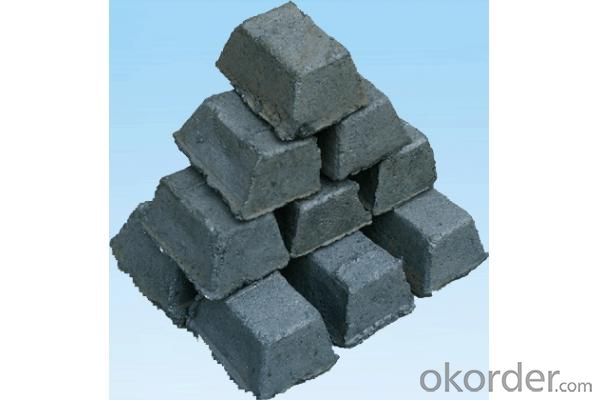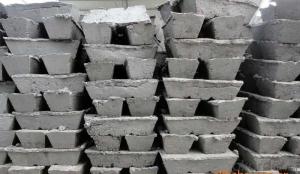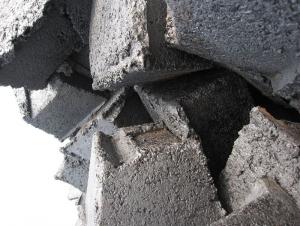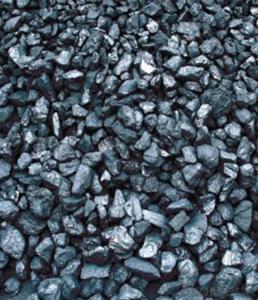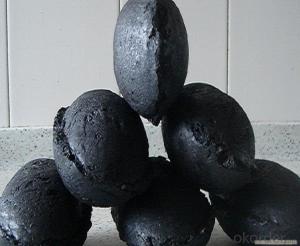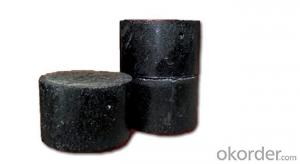Carbon Electrode Paste Cylinder Low Ash CNBM
- Loading Port:
- Tianjin
- Payment Terms:
- TT OR LC
- Min Order Qty:
- 0 m.t.
- Supply Capability:
- 20000 m.t./month
OKorder Service Pledge
OKorder Financial Service
You Might Also Like
Packaging & Delivery
| Packaging Details: | 1 mt bag or bulk package |
| Delivery Detail: | 15-30 days after we get the deposit or original L/C |
Specifications
Carbon Electrode Paste:
1)Low ash content
2)Good thermal conductivity
3)High resistance to temperature
4)Stable quality
Main Function And Features
1) Low ash content
2) Good electric and thermal conductivity
3) High resistance to temperature
4) Stable quality
5) Reasonable price
6) Size:all kinds of electrode paste
7) Accord customer's reques change
•Introduction To Products
1) Carbon Electrode Paste is a self-baking electrode used in submerged arc furnaces for delivering power to the charge mix.
2) Electrode Paste is added to the top of the electrode column in either cylindrical or briquette form.
3) As the paste moves down the electrode column the temperature increase causes the paste to melt and subsequently bake
forming a block of electrically conductive carbon.
4) Electrode Paste is essentially a mix of Electrically Calcined Anthracite (ECA) or Calcined Petroleum Coke (CPC) with Coal
Tar Pitch.
Application Range
1) Be used as the electrode for self roasting in the iron-alloy furnace and acetylene furnace.
2) Amorphous graphite powder--applied in steel making,fireproof material,casting coating.
3) Calcined petroleum coke--used in foundry,metallurgy,carbon paste,graphite electrode.
4) Carbon anode scrap--used as smelting fuel for copper smelting industry.
5) Carbon electrode paste--applied in iron alloy,calcium carbide,ferroalloy,ferromanganese.
•Main Technical parameters
Graphite/Carbon Electrode Paste
Specification/Item | |||||||
Ash | max | 4.0%max | 5.0%max | 6.0%max | 7.0% Max | 9.0% Max | 11.0% Max |
VM | % | 12.0%-15.5% | 12.0%-15.5% | 12.0%-15.5% | 9.5.0%-13.5% | 11.5%-15.5% | 11.5%-15.5% |
Compress Strength | Mpa Max | 18.0Mpa Min | 17.0Mpa Min | 15.7Mpa Min | 19.6Mpa Min | 19.6Mpa Min | 19.6Mpa Min |
Specific Resistance |
μΩm Max | 65μΩm Max | 68μΩm Max | 75μΩm Max | 80μΩm Max | 90μΩm Max | 90μΩm Max |
Bulk Density | G/CM3 Min | 1.38G/CM3 Min | 1.38G/CM3 Min | 1.38G/CM3 Min | 1.38G/CM3 Min | 1.38G/CM3 Min | 1.38G/CM3 Min |
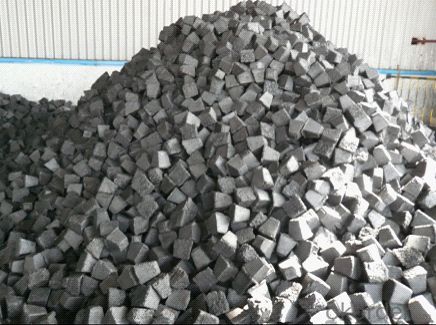
- Q: How is carbon used in the agricultural industry?
- Carbon is widely used in the agricultural industry for various purposes. One of the main uses of carbon in agriculture is as a soil amendment. Adding carbon-rich organic matter, such as compost or manure, to the soil improves its structure, fertility, and overall health. This is because carbon helps to increase the soil's ability to retain moisture, nutrients, and beneficial microorganisms, which are essential for plant growth. In addition to soil amendment, carbon is also used in the form of carbon dioxide (CO2) for greenhouse enrichment. In controlled environments like greenhouses, plants require a higher concentration of CO2 to enhance their growth and productivity. Carbon dioxide is released into the greenhouse to maintain optimal levels, which promotes photosynthesis and accelerates plant growth. Moreover, carbon-based fertilizers are commonly used in agriculture. These fertilizers, such as urea or ammonium nitrate, provide essential nutrients to crops and enhance their productivity. Carbon is an integral component of these fertilizers, aiding in the controlled release of nutrients and their effective uptake by plants. Furthermore, carbon is utilized in the production of pesticides and herbicides. Many of these agricultural chemicals contain carbon compounds that are specifically designed to target and control pests, diseases, and weeds that can harm crops. Carbon-based chemicals are often used because of their effectiveness and ability to break down naturally without causing long-term harm to the environment. Overall, carbon plays a crucial role in the agricultural industry by improving soil fertility, enhancing plant growth, and aiding in pest control. Its versatile applications make it an essential resource for sustainable and efficient farming practices.
- Q: What are the consequences of increased carbon emissions on cultural heritage sites?
- Increased carbon emissions can have severe consequences on cultural heritage sites. The most immediate impact is climate change, which leads to rising sea levels, more frequent and intense natural disasters, and changes in temperature and precipitation patterns. These changes can directly damage or destroy cultural heritage sites, including archaeological sites, historic buildings, and monuments. Additionally, increased carbon emissions contribute to air pollution, leading to acid rain and atmospheric pollutants that can erode and deteriorate cultural artifacts. Furthermore, climate change can disrupt local communities and economies that depend on these heritage sites for tourism, resulting in a loss of cultural identity and economic decline. Overall, the consequences of increased carbon emissions on cultural heritage sites are both tangible and intangible, threatening our shared history and cultural diversity.
- Q: How does carbon affect the ozone layer?
- The ozone layer is not directly affected by carbon. However, the depletion of the ozone layer can be indirectly contributed to by certain carbon compounds, such as chlorofluorocarbons (CFCs) and hydrochlorofluorocarbons (HCFCs). When these compounds break down due to sunlight, chlorine and bromine atoms are released into the atmosphere. Once in the atmosphere, chlorine and bromine atoms can destroy ozone molecules catalytically, resulting in a thinning of the ozone layer. When a chlorine or bromine atom encounters an ozone molecule, it reacts with and breaks it apart, forming a chlorine or bromine oxide molecule and a regular oxygen molecule. The chlorine or bromine oxide molecule can then react with another ozone molecule, continuing the cycle and depleting the ozone layer. Although carbon in itself does not directly contribute to ozone depletion, the production and release of carbon compounds like CFCs and HCFCs are a result of human activities. These compounds were extensively used in various industries, such as refrigeration, air conditioning, and aerosol propellants, until their harmful effects on the ozone layer were discovered. To address this issue, the Montreal Protocol, an international treaty signed in 1987, aimed to phase out the production and use of these ozone-depleting substances. However, reducing carbon emissions is essential in addressing another environmental concern – climate change. The atmosphere's high levels of carbon dioxide and other greenhouse gases trap heat, leading to global warming. This poses various threats to ecosystems and human societies. By transitioning to cleaner and more sustainable energy sources and implementing measures to reduce carbon emissions, we can effectively tackle both ozone depletion and climate change, thereby safeguarding the health of our planet.
- Q: 14 is the upper left corner of the mark, please answer a bit more detailed, thank you!
- Enter 14C, select "14", "point font" or "tool" button "superscript"".
- Q: I bought a grill myself and went to barbecue with my friends the day after tomorrow, but I can't ignite the carbon. What should I do?
- Is it barbecue in the field? If so, there are many ways to ignite carbon in the wild.The simplest, affordable way is to pile up the fire, and then use the charcoal on it, charcoal will be used after burning.At home, it is placed directly on the gas range, ignited.Charcoal direct ignition is not convenient, it is best to use other things as medium ignition.Be careful when you're in the barbecue. Watch out for the fire.
- Q: How does carbon impact the prevalence of floods?
- Carbon emissions contribute to climate change, which in turn can increase the prevalence of floods. This is because carbon dioxide and other greenhouse gases trap heat in the atmosphere, leading to global warming. As temperatures rise, more water evaporates from oceans, rivers, and other bodies of water. This increased moisture in the air can result in heavier rainfall and more intense storms, leading to a higher risk of flooding. Additionally, global warming also contributes to the melting of glaciers and ice caps, causing sea levels to rise and further exacerbating flood events in coastal areas.
- Q: How does carbon affect the electrical conductivity of materials?
- Carbon can affect the electrical conductivity of materials by either increasing or decreasing it, depending on its form and arrangement. In its pure form, carbon can be a semiconductor or an insulator, depending on its crystal structure. However, when carbon atoms are arranged in a specific pattern known as a graphene lattice, it forms a highly conductive material due to its unique electronic properties. Additionally, carbon can also be used as a dopant in semiconductors to enhance their conductivity by introducing impurities into the crystal lattice.
- Q: The relative molecular mass was between 120-150. The testThe organic matter M, which contains only carbon, hydrogen and oxygen, was measured by mass spectrometer. The relative molecular mass was between 120-150. The mass fraction of oxygen element measured by experiment is 48.48%, the ratio of hydrocarbon to mass is 15:2, and only COOH in M molecule is measured by infrared spectrometer. Then the M formula is?
- The mass fraction of oxygen element is 48.48%, the mass fraction of hydrocarbon is =51.52%, and the mass ratio is 15:2. The mass fraction of carbon is =51.52%x15/ (15+2) =45.46%, and the mass fraction of hydrogen is =51.52%x2/ (15+2) =6.06%The atomic number of C, H and O is higher than that of =45.46%/12:6.06%/1:48.48%/16=3.79:6.06:3.03Molecules contain only COOH, and oxygen atoms must be even numbers.Therefore, the number of atoms in C, H and O can be reduced to =5:8:4, which may be C5H8O4, and the relative molecular weight is 132
- Q: Made of high strength structural partsThe market quality of the carbon fiber plate is too much, the price is low, do not know how to choose. A knowledgeable friend can introduce larger enterprises? The quality of the carbon fiber board produced must be better and the performance should be stable!
- You are not for the prestressing bar, if you find the building reinforcement for Tianjin Beijing card, if you do the structure reinforcement for Jiangsu and Wuxi via the new material industry, these are relatively well-known.
- Q: How does carbon dioxide affect the pH of soil?
- Soil pH can be influenced by carbon dioxide through a process known as carbonation. When carbon dioxide dissolves in water, it creates a weak acid called carbonic acid (H2CO3). This acid can react with certain minerals and compounds, such as limestone or calcium carbonate, found in the soil, causing them to dissolve. As a result, positively charged ions like calcium (Ca2+) or magnesium (Mg2+) are released into the soil solution, which can raise the pH or make the soil more alkaline. Moreover, the presence of carbonic acid can also increase the availability of specific nutrients in the soil. For instance, it can enhance the solubility of phosphorus, making it easier for plants to absorb. This can ultimately improve soil fertility. However, it's important to consider that the impact of carbon dioxide on soil pH can vary due to different factors, including the concentration of carbon dioxide, soil type, and the presence of buffering agents. In some cases, the soil's buffering capacity can limit the effects of carbonic acid on pH changes. Therefore, while carbon dioxide can influence soil pH, it is just one of many factors that can affect the overall acidity or alkalinity of the soil.
Send your message to us
Carbon Electrode Paste Cylinder Low Ash CNBM
- Loading Port:
- Tianjin
- Payment Terms:
- TT OR LC
- Min Order Qty:
- 0 m.t.
- Supply Capability:
- 20000 m.t./month
OKorder Service Pledge
OKorder Financial Service
Similar products
Hot products
Hot Searches
Related keywords
